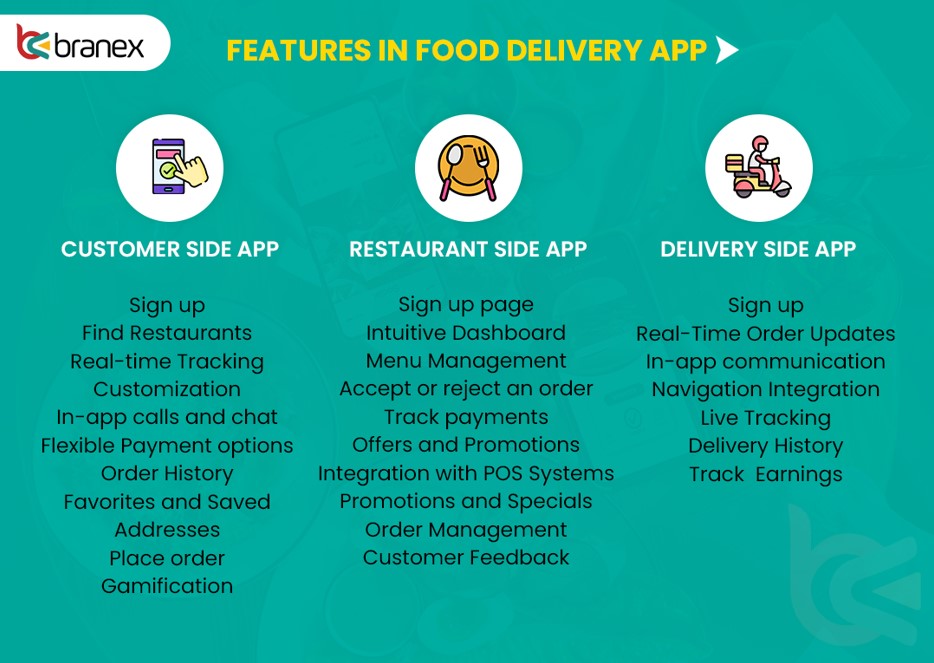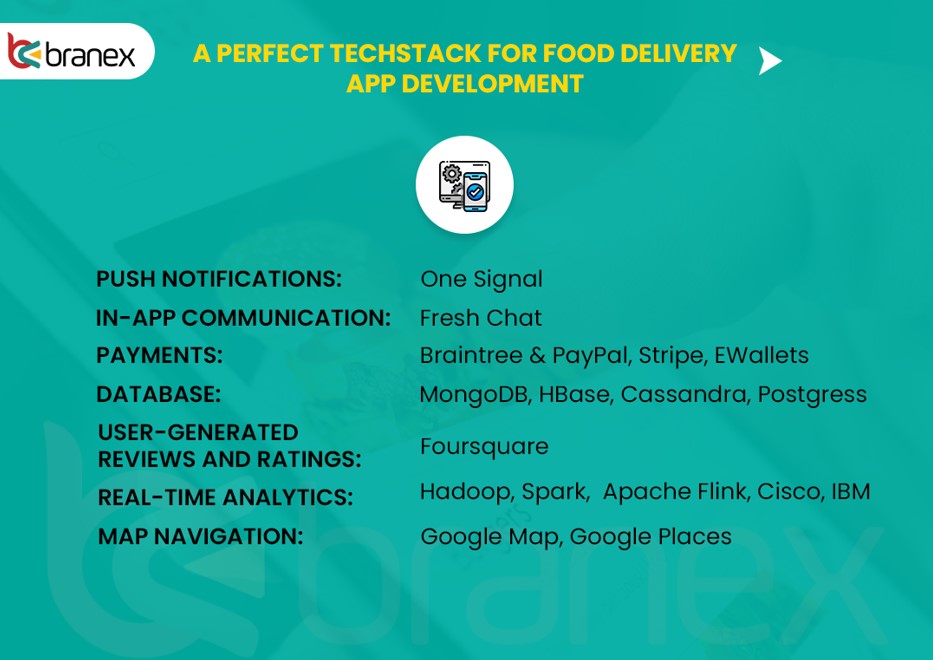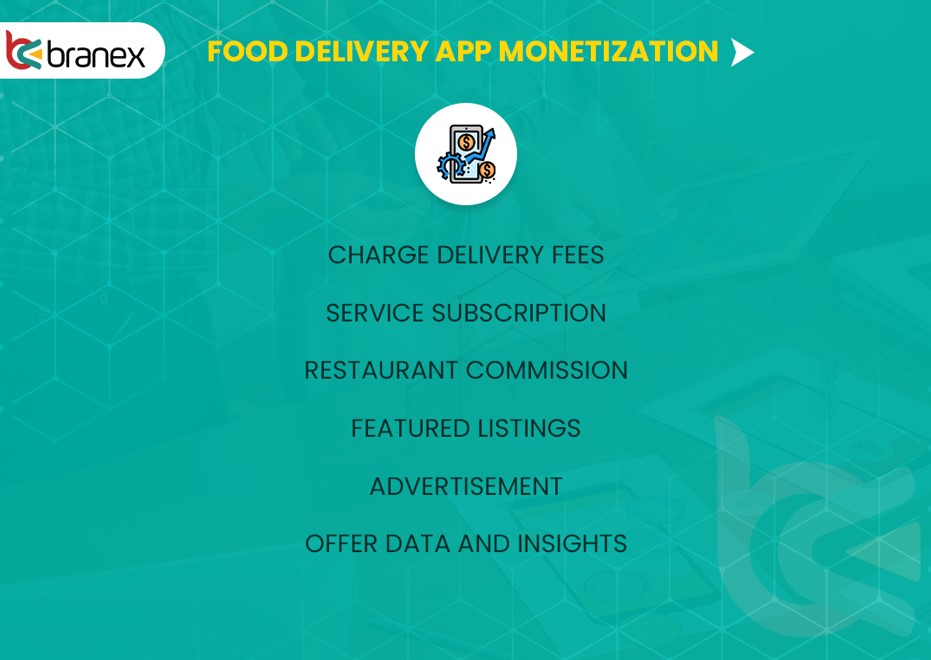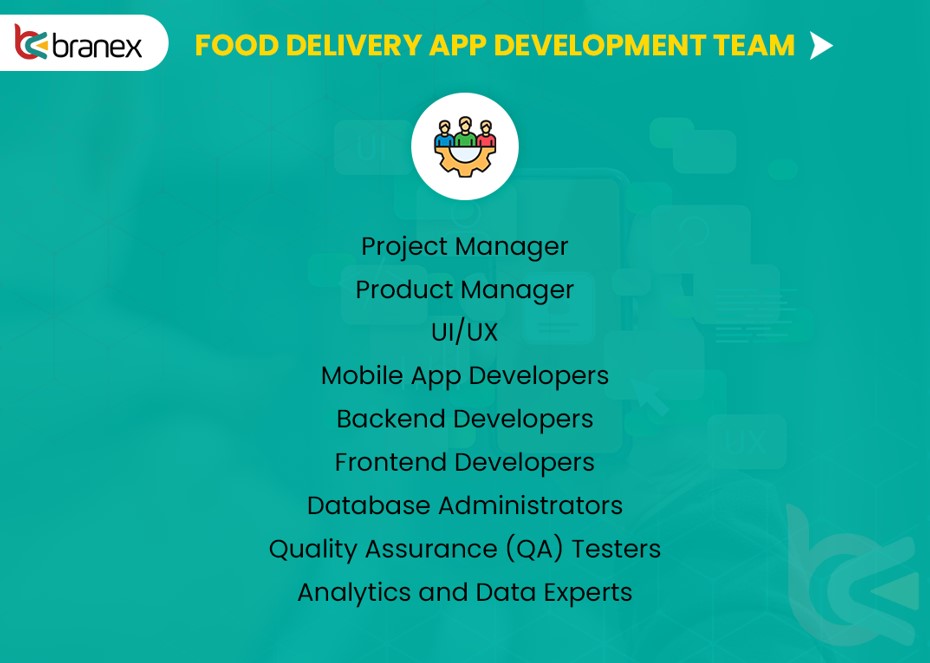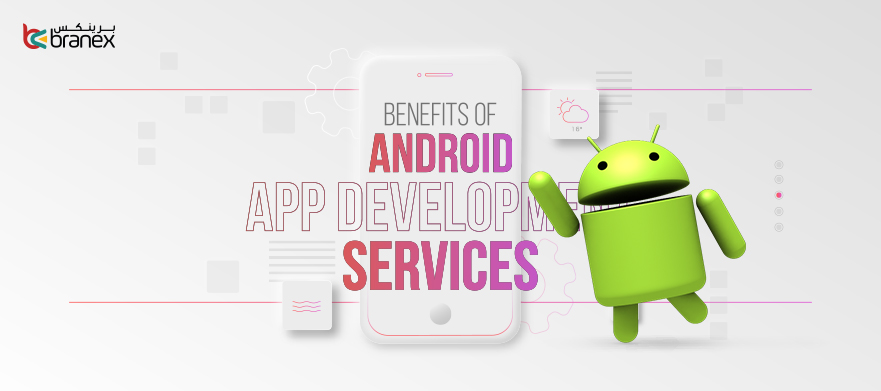
The 10 Best Web Design Companies in Dubai
August 28, 2023
Mobile Healthcare (mHealth) App Development: Benefits, Types and Future
September 5, 2023101 on Developing a Food Delivery App in Dubai That is Better Than Talabat
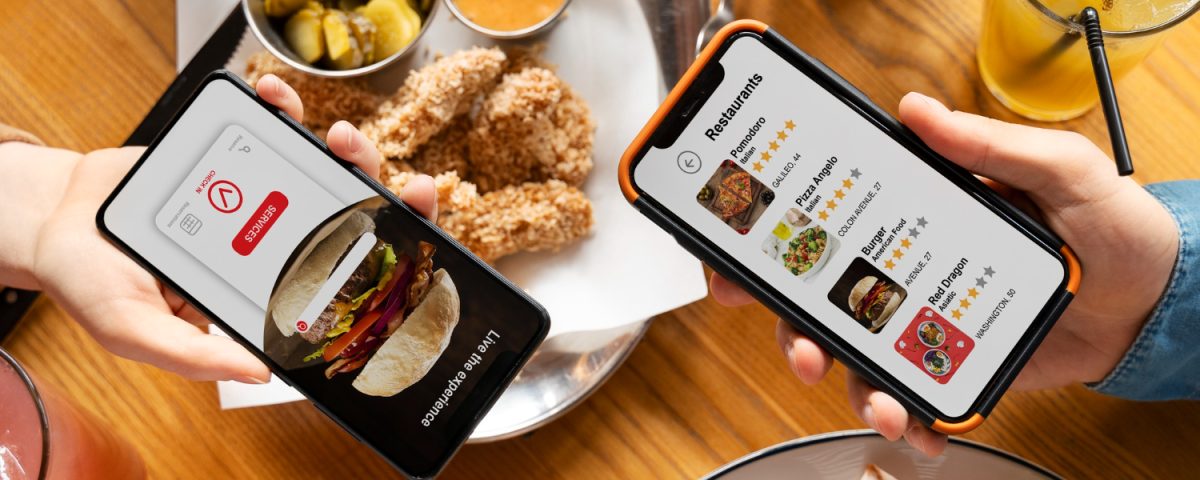
What do you do when the hunger pangs kick in at the oddest of hours? What if you have a mere few minutes to grab a bite between meetings but no time to head out to an eatery? Fortunately, you don’t have to leave the house when craving for a piping hot pizza or a bucket of succulent wings, thanks to food delivery apps.
The pandemic and the resulting safety regulations, including the ban on restaurants, brought the pertinence of delivery apps to the limelight, and ever since it’s hard to come by someone who doesn’t have at least one delivery app installed on their phones. In fact, the Online Food Delivery segment is expected to reach a booming $306,808M in revenue by the end of 2022. While apps like Careem, Deliveroo, Noon Food, and Talabat have captured the lion’s share of the UAE market, many consumers are critiquing these platforms for unfair service commissions and high delivery fees.
The increasing competition means that new products are needed in the market which can fill the gaps and address the pain points of customers. Whether you are an optimistic entrepreneur who is looking for the next best app idea or a restaurant owner who wants to make their menu available to an enormous pool of customers, this could be your chance to hit the mark!
Table of Contents
Building a Food Delivery app From Scratch
Let’s dive into creating a food delivery marketplace similar to UberEats and Talabat and what can you do to create an app that leads.
Create A Development Strategy
While all food delivery apps fall under the wider umbrella of on-demand apps, there are two specific types of food delivery apps that we see frequently.
- Restaurant to consumer: This is a much simpler delivery app that individual brands or international chains like Subway, Domino’s or McDonalds use to take online orders. These apps let customers order meals from a specific restaurant only via its own delivery service rather than relying on outsourced logistics-focused platforms.
- On-demand food delivery app: This is a bigger marketplace that connect food connoisseurs to different restaurants and food establishments and may offer logistical help – think UberEats, DoorDash, Grubhub, Deliveroo, and Postmates. However, some aggregator apps only bring together multiple eateries under one platform, allowing consumers to order from different restaurants, while the restaurant takes care of delivery and logistics.
While a basic restaurant app is much easier and economically feasible to develop, it doesn’t offer much in terms of scope. On the other hand, on-demand food delivery apps may cost you an arm and a leg, but they eventually pay for themselves.
Once you have decided on the app you want to build and the business model you are going to follow, it is time to put the scope to paper and crafting a development strategy. This comes down to determinizing the Platforms for which you wish to develop an app, the complexity and magnitude of the app, the features you want to incorporate within your app, the USP which will differentiate your app from others in the market, the unique pain points your app will address, the tech stack, frameworks, database and APIs, not to mention the app architecture. This is also a great time to discuss monetization strategies, and set App development milestones as well as an estimated time of completion. Remember that you will have to invest in developing and maintaining a scalable and secure technology infrastructure, including servers, cloud storage, databases, and software development costs.
Select the Right Functionality
Before you start developing a food delivery app, you need to decide on the features, functionalities, and APIs it will integrate. First, make sure your app is available on both iOS and Android platforms for a seamless and intuitive user experience, and also supports multiple languages, especially if you are operating in various regions. Before we get started, it is important to comprehend the main parties involved:
- Customers who check out the menus of available restaurants and place an order.
- Popular chains to smaller, independent establishments who accept these orders and prepare them.
- The delivery riders who pick up orders from restaurants and deliver them to the customers.
Customer Side App
Signup: The sign-up feature is a must-have. This is where customers create their account. Be sure to incorporate authorization via email address or social media channels.
Find Restaurants: Customers can select their location to view all available restaurants, along with their menus, pricing, ratings, reviews, and opening hours. Be sure to incorporate search and filtering options so users can quickly find specific cuisines, dishes, or restaurants based on their preferences. Advanced filters such as “fastest delivery” and “search by ratings” can further improve customer experience. The app should also provide estimated delivery times for each restaurant, so users can plan their meal arrival accordingly.
Real-time Tracking: Customers hate waiting for food, but knowing the exact location of their order at any time makes the waiting less sore. Users should be able to monitor the progress of their orders in real time, from the moment it’s placed to when the restaurant is preparing it to when it’s out for delivery to its whereabouts.
Customization: Users may wish to customize their orders by adding or removing ingredients, listing specific allergens, or quoting any specific delivery instructions.
In-app calls and chat: Customers should be able to open chat with restaurants and couriers for concerns regarding their order. Also integrate customer support chat to assist users with any issues or inquiries related to their orders.
Flexible Payment options: The world is going cashless so if you want customers to keep ordering from your app, you should implement a wide variety of secure payment options, including credit/debit cards, digital wallets, and Apple Pay, offering customers flexibility and convenience.
Order History: Users should also have access to their order history, with filters including “last bought” or “Bought frequently”, so they can reorder their favorite meals.
Favorites and Saved Addresses: Allow users to save their favorite restaurants, dishes, and delivery addresses for quick and easy future orders.
Place order: Last but not the least, customers should be allowed to place an order right from the restaurant menu, rather than visiting separate product pages. Be sure to add a add-to-cart button along with each product on the menu.
Gamification: A lot of food delivery apps have introduced gamified elements, such as loyalty points, badges, or challenges to engage users and encourage repeat orders.
Restaurant Side App
Sign up page: Akin to a signup page for customers, food businesses also need to create a profile on the delivery platform with all the pertinent details, including name, location, menu, business hours, and contact information.
Menu Management: An integrated content management system where vendors can easily update and customize their menus, including adding new items, modifying prices, adding photos, and specifying dietary information.
Integration with POS Systems: Facilitate a smooth incorporation with the eatery’s point-of-sale (POS) framework, enhancing the efficiency of order processing and reducing the need for manual data input.
Promotions and Specials: The ability to create and launch promotions, discounts, and deals to attract more customers and become word of mouth.
Order Management: Include a real-time order tracking feature that displays incoming orders, order details, and estimated delivery times. The restaurants should be able to view the exact status of all orders – be confirmation to preparation, pickup, and delivery – at any time.
Customer Feedback: Restaurants should be able to receive and respond to customer reviews and ratings, in order to improve their offerings and service.
Delivery Rider Side App
Sign up: Again, all delivery riders should create a profile on the food delivery platform, including details such as name, vehicle, rating.
Real-Time Order Updates: The courier-side app should ideally provide real-time updates on incoming orders, with details like pick up and drop off location, order items, delivery instructions, order size, and the customer’s contact details. Riders should be allowed to accept or reject orders based on factors like distance, time constraints, and workload. Delivery riders should also be shown estimated delivery times so they can manage accordingly.
In-app communication: Riders should be able to communicate with restaurants and clients to solve issues that arise in real-time issues and also send order status updates.
Navigation Integration: The rider-side app should also be integrated with navigation services such as Google Maps or Waze to provide turn-by-turn directions for efficient route planning and navigation. Additionally, you can also include algorithms that optimize delivery routes to save time and reduce travel distances.
Live Tracking: Allow delivery riders to share their real-time location with customers so they can track the rider’s progress as they approach.
Select the Right Technology Stack

Find user location
Google Places
When you are developing a food delivery app like Talabat, The Google Places API is another important tool in your arsenal. By providing accurate location data for restaurants and other businesses, the customers receive their food promptly.
Google Matrix
This is another handy API that calculates the distance as well as the estimated travel time to reach the destination. If you want to keep the delivery times to a minimum, you can even use this API to display only those restaurants that are in the proximity of the customer.
Google MAPS
As soon as the customer places an order, this API helps the delivery personal find directions to restaurants and customers.
Send Push Notifications
Foursquare API
Integrating Foursquare’s user-generated reviews and ratings can help users gauge the quality of a restaurant, as well as gather real-time information about restaurant openings, closures, and special events, and whether a restaurant offers delivery and takeout options.
Fresh Chat API
You can integrate live chat functionality with the help of Freshchat API into your food delivery app to provide real-time customer support. Customers can initiate chats to ask questions about their orders, delivery times, menu items, payment issues, or even provide feedback on their experience post-delivery or issue complaints. You can also send personalized notifications to users based on their preferences, including information about new menu items, special offers, or promotions. The API is free for up to 10,000 visitors, but charges $15 per month when you exceed the limit.
One Signal API
This API lets you add push notification and in-app messaging functionality to your food delivery app. Use this API to send notifications to your users based on actions, such as order updates, delivery status, promotions, etc. or display messages within your app, such as announcements, tips, or special offers.
Secure Payment Gateways
APIs such as Square API, Braintree, Stripe, and PayPal let you offer flexible payment methods, such as cash on delivery, credit/debit cards, and digital wallets. The key is to offer flexibility and convenience to customers, which is the main reason most people choose to order through delivery apps.
Monetize Your App
Successful monetization goes hand in hand with providing value to both users and restaurants. There are several monetization strategies you can use to make money from your food delivery app:
Delivery Fees: Most food delivery businesses in Dubai such as UberEats charge users a fee for each delivery made through the app. This can be a fixed fee – usually 15 – 30 AED, or a percentage of the order total. Additionally, you can also integrate a pricing calculator to work out the delivery order fee by the distance between customers and vendors.
Service Subscription: Offer a subscription or a loyalty program that provides benefits such as free or discounted deliveries, exclusive deals, and priority support for a one-time premium. This two-prong subscription model has gained quite some traction in the food service industry, since apps like Talabat and Zomato are also using this monetization technique. Not only do you get to earn a hefty amount from monthly or annual subscription fees, but you also garner a recurring fan base.
Restaurant Commission: Another popular monetization method is to charge restaurants a commission on each order placed through your app, where the commission percentage varies based on the agreement with the restaurant. Most food delivery apps typically charge between 8 – 40 percent of commission from the restaurants for each order placed through the app.
Featured Listings: You can also ask restaurants to pay for better visibility within the app, such as appearing at the top of search results or in featured sections. Apps like Talabat generate revenue by charging restaurants for these promotional services. Additionally, you can also collaborate with restaurants to offer limited-time promotions, and charge them a fee for participating in these campaigns.
Advertisement: Partner with restaurants or other businesses to display targeted ads within the app. This could be a restaurant promoting its specials or other relevant businesses catering to your user base.
Offer Data and Insights: Food delivery apps like Talabat follow a data-driven revenue stream, where they collect valuable data on customer preferences, such as ordering patterns, and restaurant performance and sell this data to restaurants, helping them optimize their operations and make data-driven decisions.
Think outside the box: Once your food delivery app is up and running, why not expand your offerings beyond restaurant deliveries by including meal kits or grocery delivery services or even extend your delivery services to include other local businesses like pharmacies, convenience stores, and more.
Food Delivery App Development Team
You would require a professional mobile app development company to build a custom food delivery app, including:
Project Manager: Oversees the entire development process, plans the app development lifecycle, communicates with stakeholders, manages the timeline, and ensures that the project stays on track.
Product Manager: Works closely with the project manager to define the app’s features, functionalities, and user experience. They gather requirements, prioritize features, and make sure the app meets the users’ needs.
UI/UX Designer: Creates the user interface and designs the user experience to ensure the app is visually appealing, easy to navigate, and user-friendly.
Mobile App Developers: Depending on the platform (iOS, Android, or both) you are building for, you might need separate developers with expertise in Swift (for iOS) and Kotlin/Java (for Android), for a seamless experience.
Backend Developers: Build the server-side logic, databases, APIs, and other components that power the app. They handle the business logic, user authentication, order processing, and more.
Frontend Developers: If your app includes a web-based dashboard for restaurant owners or admin purposes, frontend developers will be responsible for creating the user interface and experience for that aspect of the app.
Database Administrators: Manage and optimize the database that stores user profiles, menu items, orders, and other essential data.
Quality Assurance (QA) Testers: Responsible for testing the app thoroughly to identify bugs, glitches, and usability issues. They ensure the app functions as intended across various devices and scenarios.
Analytics and Data Experts: Implements tracking mechanisms to gather user data and app usage patterns. This data can help refine the app and provide insights for future improvements.
How Much Does It Cost to Develop a Food Delivery App?
It is hard to put an exact figure to the development cost of a food delivery app in Dubai as the cost can vary significantly depending on a variety of factors. For starters, the cost is generally determined by the app development agency you hire. Most app owners prefer outsourcing their product development, especially to offshore companies, since it is lighter on the pockets. Development teams in North America and Western Europe tend to have higher rates compared to teams in Eastern Europe, Asia, or other regions.
The more features you want to incorporate into the app, the higher the cost will likely be. In addition to basic features, such as user registration, menu browsing, order placement, payment integration, and order tracking, you may want to incorporate more advanced features such as real-time GPS tracking, user reviews, loyalty programs, and AI-driven recommendations, which can skyrocket the cost. Also, integrating with payment gateways, map services (for location tracking), and other third-party services will add to the development cost, as we have seen above. Not to mention, you also need to determine if you are developing the app for one platform (e.g., iOS or Android) or multiple platforms (cross-platform or native.
It is also important to factor in additional costs, such as domain, and hosting, marketing and success marketing, app maintenance and software updates, implementing app security measures, and post-delivery support. Keep in mind that a simple app can cost you between $30,000 – $50,000, while a more advanced, multi-faceted one can cost anywhere between $52,000 – $90,000. Nevertheless, it is essential to consult with development professionals to get a more accurate estimate based on your specific requirements and goals.
Why Hire Branex for Building a Complex Food Delivery App?
Do you have an innovative meal delivery app that will strike the right chord with consumers?
While you can certainly attempt to develop it in-house, a food delivery app entails technical intricacies that only a professional app development agency can unravel. With extensive insights into the food delivery industry, including market trends, customer preferences, and competitive landscape, and years of expertise delivery stellar on-demand applications to the UAE market, our experts leverage their domain expertise to build a food delivery app that resonates with your target audience. As an award-winning app development company in UAE, our customer-centric solutions will breathe life into your concept.
Whether you need to incorporate unique features or functionalities, our professionals can tailor the app to your specific requirements, ensuring that it aligns with your business goals. By fully comprehending the intricacies of app development, user experience design, backend infrastructure, and more, our skilled developers will focus on creating an intuitive, user-friendly interface that enhances user satisfaction and encourages repeat usage. We can provide you with a diverse skill set, including mobile app development (iOS and Android), backend development, database management, API integration, and more, ensuring your app stands out in this cut-throat market.








